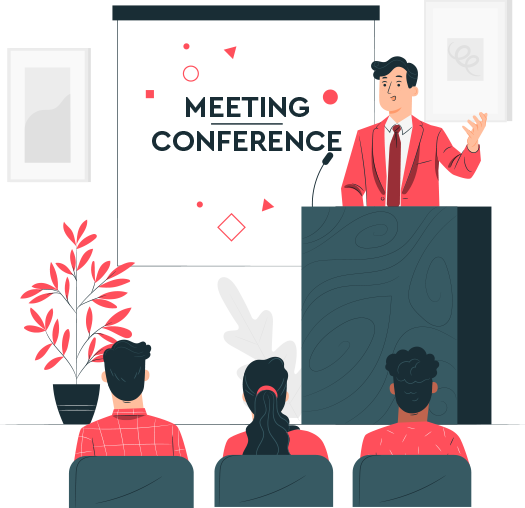At times, project management can seem overwhelming. After all, how do you get started? Which methodology should you use? And most importantly, what can you do to make sure your projects go off without a hitch?
There are just so many complex questions you need to answer. Fortunately, although this topic may seem intimidating, it’s actually far less so once you understand the basics of project management.
That’s what you’ll learn in this convenient project management guide. In it, we’ll explain the 5 phases of project management, the keys to running a successful project, the different project management methodologies, and much, much more.
What Is Project Management?
Before delving deeper into the topic of project management, let’s first define what it is. According to the Project Management Institute (PMI), “project management is the use of specific knowledge, skills, tools and techniques to deliver something of value to people.”
That “something of value” can include things like a new software that’s being developed to improve business operations, the construction of a condominium, or even the nationwide rollout of a new vaccine.
How Did Project Management Start?

The earliest known project was the construction of the Great Pyramid of Giza in 2570 BC. While historians are still in disagreement about how such a massive enterprise was completed, we do know that there were four managers–each of whom was responsible for overseeing the completion of a different face of the wall.
And of course, since then, there have been a number of similar major undertakings, like the Great Wall of China, the Coliseum, and the Parthenon.
However, project management as we know it today didn’t really begin until 1917, when Henry Gantt developed the Gantt chart.
The Gantt chart provided a way to visually depict all of a project’s tasks–as well as when they needed to occur, so the project could be completed successfully. Considered groundbreaking for its era, Gantt charts were first used for large construction projects, like the Hoover Dam.
Yet despite the advent of the Gantt chart, project management didn’t really begin to grow in popularity until the 1950s, when more organizations started to apply systematic techniques to complex undertakings.
During this era, we saw the creation of the Critical Path Method (CPM) and Program Evaluation Review Technique (PERT)–two project scheduling models that are still in use today.
By 1969, project management had become an increasingly important discipline. Subsequently, Jim Snyder, of Smith, Kline & French Laboratories, and Gordon Davis, of the Georgia Institute of Technology, decided over dinner that year that there needed to be an organization for project managers (PMs), so they had a forum to share information about their industry.
With that dinner, the Project Management Institute was born. Today, the organization assists 2.9 million professionals and has 500,000 members in over 200 locations around the world.
Why Is Project Management So Important?
Project management is incredibly important, because it helps keep organizations on track, so they can realize their goals on-time and within budget.
But, project management does so much more than that! For instance, most businesses employ project management techniques, because they also offer the following benefits:

Clear Focus & Objectives
When a project is well-managed, everyone knows what the end goal is, which tasks are required to move the team closer to that objective, and who needs to complete those tasks.
In the absence of project management, those variables tend to be left to chance–often resulting in vague objectives, ill-defined priorities, and team members that don’t really know what they’re supposed to be doing.
So, one big benefit of project management is that objectives are clearly defined, which results in better outcomes.
Realistic Expectations
Project management breaks down the tasks required to complete a specific goal–and any interdependencies that might delay the team’s ability to meet that objective.
Because there’s an in-depth understanding of what needs to be done to complete the project successfully, corporate stakeholders are less likely to make urgent demands that the project be completed “yesterday.”
As a result, the project team has a realistic, achievable schedule–rather than one that would be impossible to meet.
Time & Money Savings
There are a number of ways project management can save businesses time and money. For starters, project management processes help maximize the project team’s productivity throughout the duration of the entire project. As a result, project delays and obstructions are diminished–so the project is more likely to be completed on time.
Furthermore, project management identifies and eliminates redundant assets–in terms of both personnel and materials. The importance of that cannot be overstated because redundancy can increase resource costs, add to the length of the project, and reduce overall productivity. By contrast, in the absence of redundancy, businesses have the potential to save lots of money.
Finally, project management keeps subcontractors to a timeline–making it far more likely that they’ll complete their tasks by the agreed-upon deadline, while also reducing liability concerns.
For these reasons, research indicates that companies with a formal project management approach complete 63% of their projects within budget and 59% of their projects on time.
By contrast, businesses that rarely or never use formal project management methods only complete 48% of their projects within budget and 43% of their projects on-time.
Additionally, companies that develop project management practices save a whopping 28 times more money than those that don’t–which is why project management simply makes good financial sense.
Better Outcomes
Incredibly enough, 70% of projects fail–meaning that they don’t deliver what was promised to customers. However, that failure rate drops to 20% or less when project management processes are followed.
Perhaps this can be attributed to the fact that not only does project management employ a clearly defined process, but it also means there’s a project manager to keep everything on track, so project goals are met–while everyday project pitfalls like scope creep, overspending, and missed deadlines are more easily avoided.
What Are the 5 Critical Roles in Project Management?
According to the Harvard Business Review, there are 5 primary roles associated with project management:
1. Project Manager
The project manager or PM is in charge of overseeing the entire project, ensuring that the project’s objectives are met on-time and within budget.
To accomplish this, the project manager performs the following tasks:
- Identifies which activities are necessary to meet the project’s objectives
- Plans and schedules tasks
- Oversees day-to-day execution of those tasks
- & Monitors the project’s progress
Once the project is complete, the project manager also captures lessons learned for the benefit of future projects.
2. Team Member
Project team members are full- or part-time individuals who work on one or more phases of the project. Team members can include internal resources, such as employees, or they can consist of external partners–for instance, like an overseas IT team that’s helping with the development of a new software project.
Typically, team members assist by performing one or more of the following duties:
- Providing time/expertise to achieve the project’s objectives
- Completing deliverables
- Consulting with users to ensure the project meets their business needs
- & Documenting the process
3. Team Leader
Smaller projects are unlikely to have a team leader, but on large projects, team leaders are essential. These individuals report directly to the project manager and typically fulfill a number of roles, including:
- Initiating – Team leaders get everyone on the same page, making sure that all team members understand the actions that need to occur for the team’s goals to be met.
- Modeling – Team leaders set an example for other employees, modeling their own behavior to shape the performance of other team members.
- Negotiating – At times, team leaders may negotiate with resource providers to ensure that project deliverables are completed successfully.
- Coaching – It’s not uncommon for team members to lack some of the necessary skills to complete their tasks. Team leaders help their team members develop those skills, so they can fulfill the project’s objectives.
- Listening – Team leaders keep an ear to the ground, so to speak–listening for signs of impending trouble and employee discontent, as well as new, beneficial opportunities.
- Working – Team leaders aren’t just responsible for providing direction, they also have to do some of the work themselves, particularly in areas where they have a unique competence.
4. Project Sponsor
The project sponsor plays a key role, championing the project at the highest level of the company and helping eliminate any organizational obstructions. Additionally, the project sponsor communicates with key stakeholders, provides resources, and approves or rejects outcomes.
5. Project Steering Committee
The project steering committee consists of the project sponsor and all key stakeholders. The committee is responsible for approving the project charter, securing resources, and deciding whether to approve requests to change various elements of the project–such as its deliverables, schedule, or budget.

What are the 5 Phases of Project Management?
According to Villanova University, there are 5 phases of project management:
1. Project Initiation
During the first phase of the project life cycle, the project manager needs to determine (a) how feasible the project is and (b) how much value it’ll deliver. To accomplish these objectives, PMs usually rely on the following tools:
- Business Case Document – This document explains why the project is needed and what financial benefit the company will experience, should the project be implemented.
- Feasibility Study – Not every project is doable or financially sound. A feasibility study evaluates the project’s goals, costs, resource requirements, and timeline to determine whether it makes sense financially for the project to proceed.
2. Project Planning
Once the project’s been given the go-ahead, it’s time to create the project plan that’ll guide the team. This key document details all the important elements of the project, such as which tasks need to be completed, how resources will be obtained, what obstacles may be encountered, and how risks will be handled–while also laying out the project’s projected cost, scope, and timeframe.
3. Project Execution
After the project plan’s been completed and approved, it’s time to begin executing the tasks that are required to meet the project’s objectives. During this phase, team members work toward completing the project deliverables that were detailed in the project plan.
4. Project Monitoring & Control
This phase is often ongoing during execution to ensure that project deadlines are being met successfully, and scope creep is prevented. To accomplish these objectives, teams track key performance indicators as a way of making sure everything’s unfolding according to schedule and within budget.
5. Project Closure
Once the project’s deemed complete, the team evaluates and documents the experience. By capturing lessons learned, teams have the opportunity to glean valuable information from the challenges they experienced during the course of the project, before moving on to the next project in their pipeline.
What are the Keys to a Successful Project?
To determine which factors are most important to the success of a project, the Standish Group surveyed hundreds of IT executive managers and conducted multiple focus groups.

Based on their research, Standish concluded that projects are most likely to succeed when the following criteria is present:
- User Involvement
- Executive Management Support
- Clear Statement of Requirements
- Proper Planning
- Realistic Expectations
- Smaller Project Milestones
- Competent Staff
- Ownership
- Clear Vision & Objectives
- Hard-Working, Focused Staff
When Is a Project Considered a Failure?
According to ProjectManagement.com, a project is considered a failure when it doesn’t deliver the agreed-upon result, on-time and within budget. However, it’s far more common for project failure to be determined by stakeholders–and their overall satisfaction with how the project went.
For instance, a project could be completed a week late and 10% above projected cost but stakeholders might consider it a success–especially, if the last project was months overdue and 300% over budget … which is why when it comes to evaluating the success or failure of a project, some subjectivity is involved.
Why Do Projects Fail?

There are many reasons projects fail. Sometimes there can be one triggering event, at other times, there can be multiple causes for a failed project.
Here are some of the most common reasons that projects fail:
1. Unclear Objectives
When a project doesn’t have clearly defined goals, there are too many unanswerable questions floating around, like … What actually needs to be accomplished? Who will be responsible for it? And, perhaps most importantly, how will we judge whether the project can be deemed a success or failure?
Interestingly enough, the PMI reports that a lack of clearly defined objectives and milestones to measure progress is the most common reason projects fail (37%).
2. Scope Creep
It begins innocently enough … a project stakeholder asks for just a “small change” to the project. Although the project manager accommodates the request, they don’t modify the project plan to reflect the additional time, costs, and resources honoring that request will require.
And mind you, that’s just one “small” change. Sometimes, scope creep becomes increasingly more egregious as a project continues, as stakeholders may feel that having accommodated one request, perhaps the project team can honor another … and another.
Although scope creep may strike you as the type of thing that occurs relatively rarely, it’s actually far more common than you might think. For instance, according to statistics from the PMI, more than half of projects (52%) experience scope creep.
3. Inadequate Planning
When planning is surface-level, rather than in-depth, projects have a much greater risk of going off the rails. After all, as Benjamin Franklin once said, “By failing to prepare, you are preparing to fail.”
To prevent complications once the project gets underway, a strong project plan will clearly map out important elements of the project, such as its goals, scope, milestones, deliverables, budget, work breakdown structure, and risk management plan.
By thinking through these items in advance–and detailing how each one will be handled–the project is far less likely to encounter unforeseen problems, like a lack of stakeholder support, wildly inaccurate budget/timeline estimates, and poor scope control.
4. Lack of Communication
Successful teams collaborate, sharing information that’s useful to achieving the project’s goals. However, in the absence of clear communication, problems ensue–which is why according to the Project Management Institute, over 30% of projects fail due to poor communication.
After all, when a project suffers from communication problems, there’s a much greater likelihood that people won’t understand what their responsibilities are–which ultimately increases the team’s stress and anxiety, while slowing down productivity and creating turmoil.
5. No Risk Management
Risk management is the practice of identifying, evaluating, and preventing project risks that can derail a project. That’s important, because there are lots of potential project risks.
For instance, a project can experience extensive delays, cost overruns, or even poor user adoption–such as when Coca-Cola spent $4 million developing New Coke, and its sales were so abysmal that the “new and improved” soda was pulled from the market.
In the absence of risk management, the project team may not be able to mitigate or prevent risks–and unfortunately, when the risks are significant enough, the project can fail.
6. Lack of Project Manager Experience
Project managers have a great deal of responsibility. However, not everyone assigned to the PM role has the requisite education or experience to handle the job successfully.
Worse, there are plenty of mistakes that inexperienced project managers can make, from developing overzealous timelines to not fully understanding the project requirements.
As a result, Project Management Works reports that 20% of project failure is due to inexperienced project managers.
7. No Project Management Culture
To run a successful project, executive leadership needs to understand what it takes to manage a project, in terms of tools and training–then make sure the project team has what it needs to get the job done on-time and within budget.
However, as important as leadership buy-in is, it doesn’t occur in every organization. For instance, at some companies, the leadership team doesn’t support project management methodologies, tries to cut corners, or is just generally inexperienced.
That’s why according to one PMI study, project management delivers the most value when it’s supported by top leadership and reinforced by continuous training–in the absence of that, projects are much more likely to fail.
8. Unreliable Estimates
All too often, project estimates are way off base–which is why the PMI reports that one reason large projects often go wrong is because “cost estimators underestimate costs, planners underestimate time, [and] technologists underestimate technical complexity.”
Why does this occur? According to Research Scientist Harry W. Jones, there are 3 primary reasons for inaccurate estimates: bad luck, over-optimism, and deliberate underestimation. While bad luck and over-optimism require no explanation, you may be wondering why teams would deliberately underestimate.
Ronald Bisaccia, a managing director at Alvarez & Marsal Business Consulting, hypothesizes that project proponents are primarily responsible for this tendency. Because proponents are typically the most knowledgeable about a project when it’s still in its early stages, most companies will seek out their opinions.
However, because these individuals want the project to be completed, they’re more likely to minimize its risks, while producing unrealistic, favorable estimates.
For these reasons, statistics show us that 55% of project managers cite budget overrun as a reason for project failure, and an incredible 85% of projects are over budget to some degree. Furthermore, according to the PMI, inaccurate time estimates are the primary reason 25% of projects fail.
9. Insufficient Resources
Inadequate resource planning is responsible for project failure 23% of the time, and unfortunately, there are plenty of reasons projects may experience insufficient resources.
For instance, this issue can occur due to inaccurate estimates, organizational budget cuts, lack of commitment from managers who need to make their staff available, and team members who don’t possess the necessary skills to do the work.
As you might imagine, any or all of these problems can lead to project failure, since they all have the potential to negatively impact project execution and delivery.
10. Failure to Monitor Progress
As we mentioned earlier, a project is deemed successful when it’s completed on-time and within budget. However, meeting those objectives rarely happens by chance.
Instead, to accomplish them, an experienced project manager needs to monitor the project’s progress every step of the way to ensure that resources are delivering what they promised, when they promised it.
If they aren’t, it’s the PM’s job to course-correct. In the absence of someone actively taking that role, projects can easily be derailed.
What are the Different Project Management Methodologies?
There are literally dozens of different project management methodologies. However, some methodologies are used far more than others.
For instance, here are the 5 most common project management methodologies:
Kanban
Developed in the 1940s, the Kanban approach uses a visual framework that simplifies the process of organizing and managing projects. To accomplish this, each step of the workflow is depicted on a visual board, known as a “Kanban board.”
Because the workflow is transparent, each team member can see what tasks are being worked on and who is doing the work, as well as which tasks haven’t been started yet.

Pros of Kanban
- Easy for teams to understand quickly
- Helps eliminate work redundancies
- Shortens cycle time
Cons of Kanban
- Doesn’t use dates or timeframes
- Less useful for complex or large projects
- The Kanban board can become outdated, creating complications
What Is Kanban Best Suited For?
The Kanban approach is great for small-to-medium size projects that don’t require a lot of structure. Due to its flexibility, Kanban is best used on projects where the tasks have few interdependencies and can be completed by one team–rather than requiring cross-functional collaboration.
Waterfall
The Waterfall methodology, which was developed in the 1970s, approaches project management in a linear fashion, consisting of 7 non-overlapping, sequential phases: Requirements, Analysis, Design, Coding/Implementation, Testing, Operation/Deployment, and Maintenance.
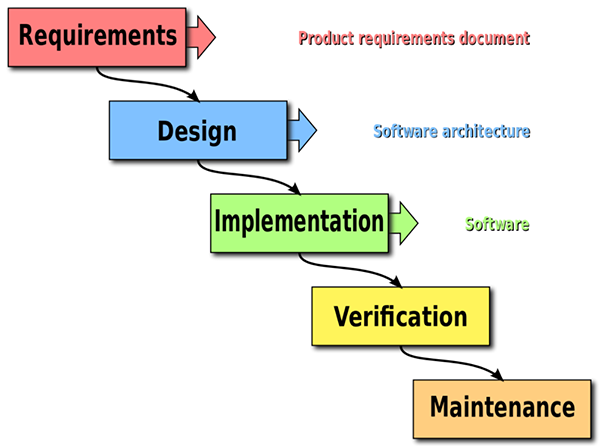
With this traditional model, each phase has formal exit criteria that must be met, like signoffs by key stakeholders–before the next phase begins. Additionally, the Waterfall model is based on fixed dates, requirements, and outcomes.
Pros of Waterfall
- Requirements are clear and unchanging
- Uses a logical structure
- Progress is easy to measure
Cons of Waterfall
- Little flexibility, even early on
- Longer delivery time
- Maintaining Waterfall documentation is time-consuming
What Is Waterfall Best Suited For?
The Waterfall methodology was initially used by the manufacturing and construction industries, before becoming one of the oldest and most widely used software development life cycle models.
Waterfall works best for projects with phases that must be completed sequentially, because it offers a predictable, linear approach. Additionally, this methodology is useful for projects with fixed, clearly defined deliverables and requirements.
Lean
In the 1930s, Toyota production-control expert, Ohno Taiichi, heard that it took 9 Japanese workers to do the work of 1 American worker. As he considered the difference, Taiichi concluded that there must be a lot of waste in Japanese manufacturing. He subsequently created the Toyota Production System, a methodology aimed at producing high-quality products efficiently by eliminating waste.
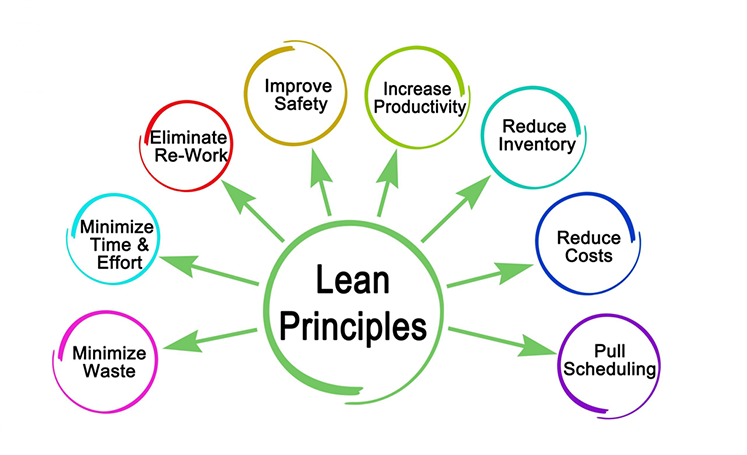
The principles of Lean were later developed in 1991, and they were largely based on the Toyota Production System. According to the PMI, “To be Lean is to provide what is needed, when it is needed, with the minimum amount of materials, equipment, labor, and space.”
To achieve this, there are 3 main pillars of Lean: (1) learn to spot waste, (2) make daily improvements, and (3) record those improvements.
Pros of Lean
- Greater efficiency
- Improvement in quality
- Increased profitability
Cons of Lean
- Lean practices necessitate a complete overhaul; without employee buy-in, that overhaul can be difficult to implement
- Requires a lot of upfront time and planning
- The implementation costs associated with Lean can be high
What Is Lean Best Suited For?
Although Lean initially got its start in manufacturing, today Lean management principles are used in IT, construction, education, and other industries.
Because Lean consists of small, self-managing teams, Lean methodology works best on small projects with short delivery timeframes. It’s also ideal for organizations that want to transform their daily operations.
Agile
Agile is named as such, because the word agility “signifies the ability to move something forward in a quick way that allows easy changes of direction.”
Really, Agile can be considered more of a philosophy than a methodology. Still, this framework is so popular in software development that a discussion of project management methodologies would be incomplete without it.
The Agile approach is iterative in that it breaks projects into smaller cycles, called sprints. These short sprints typically last 2-4 weeks, and teams release segments of the project at the end of each sprint.
Because these segments are fixed fast if flaws are found, continuous improvement occurs throughout the project lifecycle–mitigating the risk of system-wide failures.
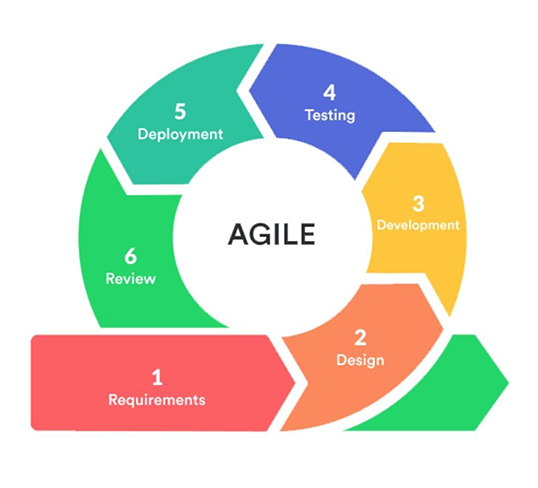
Pros of Agile
- Allows for faster delivery, higher quality work
- Solicits client feedback throughout the course of the entire project, so clients are more likely to be pleased with the end result
- More flexible and responsive than other methodologies
Cons of Agile
- Projects can become ever-lasting, since there’s no clear end date
- Costs can be difficult to project
- Increased tendency for scope creep
What Is Agile Best Suited For?
Typically, Agile is associated with software development, however, the Agile framework is also used by the construction, engineering, aerospace, and pharmaceutical industries, as well as many others.
Agile works best for urgent, complex projects that have a lot of moving pieces. It’s also particularly valuable for projects that produce a product of some sort that can be released in iterations. Additionally, because Agile projects solicit ongoing client feedback, this framework works well when adaptability is a priority.
SCRUM
SCRUM is a type of Agile methodology. While SCRUM follows the general principles of Agile, SCRUM provides a more specific framework that includes further definitions and specifications.
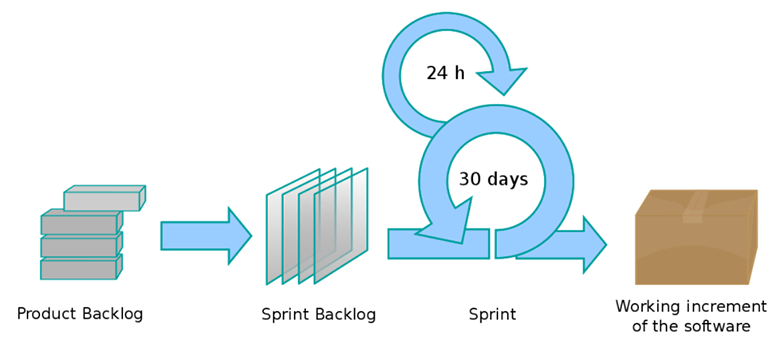
With the SCRUM framework, a product owner prioritizes their most important objectives, creating what’s known as a product backlog. The project team then chooses high-priority items from the product backlog to tackle during the upcoming sprint–those items make up the sprint backlog.
At the end of each sprint, work should be complete and ready to hand off. The SCRUM process is an iterative one, with the project team tackling the highest-priority items in sprint after sprint.
Pros of SCRUM
- Faster delivery of a viable product
- Sprints make it easier to manage larger projects
- Because work is delivered after each sprint rather than at the end of the project, correcting mistakes is relatively easy with SCRUM
Cons of SCRUM
- Frequent communication is key, which makes SCRUM better suited to smaller teams (i.e. 4-6 members)
- SCRUM requires everyday meetings (known as the daily scrum), which the project team may find time-consuming and tedious
- With no deadline to deliver a final product, scope creep is common
What Is SCRUM Best Suited For?
Over the years, the SCRUM methodology has been used in many different industries, including: software development, education, construction, automotive, marketing, event planning, product development, and financial services.
SCRUM works well for complex projects where customer requirements aren’t fully defined or are subject to change. Because adaptations are likely to arise once the project gets underway, SCRUM is best suited for companies with corporate cultures that are flexible and open to change.
How to Manage a Project from Start to Finish
There are 8 key steps to successfully managing a project:

1. Identify Project Goals
The first step in managing any project is to meet with the project sponsor and key stakeholders to delve deeper into the project request, finding out the answers to questions, like:
- What should the project accomplish?
- What are the anticipated benefits of the project?
- What timeframe does the project need to be completed by?
- What’s the budget for the project?
These are questions the project manager needs to answer, so he or she fully understands the client’s objectives, expectations, timeline, and budget before moving forward.
2. Determine Feasibility
Once the project goals have been clearly outlined, it’s time to evaluate:
- Whether there are any potential risks that could affect the success of the project
- How much money the project is likely to cost
- And whether resources have the necessary time and skills to work on the project
In some cases, it may be determined that there’s no point in moving forward—-after all, it hardly makes sense to solve a $5 problem with a $5,000 project.
However, if the project is deemed feasible, the next step in the process is to define the project’s scope.
3. Define the Project’s Scope
During this step, the project manager determines and documents the project requirements i.e. the scope of the project. This documentation should include specific goals, deliverables, features, functions, tasks, deadlines, and costs. Essentially, it outlines everything that needs to occur for the project to be successful.
4. Create the Project Plan
After determining the scope of the project, the project manager is responsible for creating the project plan. The project plan contains all the important details of the project, including its goals, scope, milestones & deliverables, work breakdown structure, personnel needs, risk management plan, project schedule, communication plan, and budget.
At larger organizations, the project plan will typically go through a formal review and signoff process that involves management, the project sponsor, the project team, and other key stakeholders.
5. Execute the Project
Once the project plan has been approved by key stakeholders, the project manager typically holds a kick-off meeting.
During this meeting, the PM will discuss the project tasks with team members, as well as the project timeline, milestones, and deliverables. This ensures that the entire team is on the same page, so the project can get off to a great start.
6. Monitor Progress
It isn’t enough for the project manager to just send team members on their way after the kick-off meeting and assume everything will get done as discussed.
Instead, the project manager needs to keep track of how the project is unfolding by monitoring whether tasks are being completed on-time and within budget. In the event that they aren’t, the PM needs to revise the project’s timeline to account for any variances.
7. Communicate
Throughout the course of the entire project, the project manager needs to communicate with key stakeholders to keep them apprised of the project’s status.
This keeps clients in the loop, so they can see that progress is being made and don’t experience any last-minute surprises. It also provides the opportunity for clients to provide feedback, should their priorities change based on how the project is unfolding.
8. Close Project
Once all the project deliverables have been completed, the project manager obtains all the necessary signoffs from the key project stakeholders. The PM will also perform a post-mortem of the project to evaluate how it went from the team’s perspective.
During that analysis, the PM works with team members to answer questions like:
- What went well with the project?
- What challenges did you experience?
- How was communication on the team?
- How can we improve future projects?
Using this feedback, the project manager will document lessons learned for the benefit of future project teams.
In Conclusion
Project management can seem like a massive undertaking. However, the entire process is made much easier when you have the right knowledge and project management software.
Hopefully, this blog post has given you a good understanding of the basics of project management. Our PM software can help you run better projects as well. To learn more about Teamly, click here.













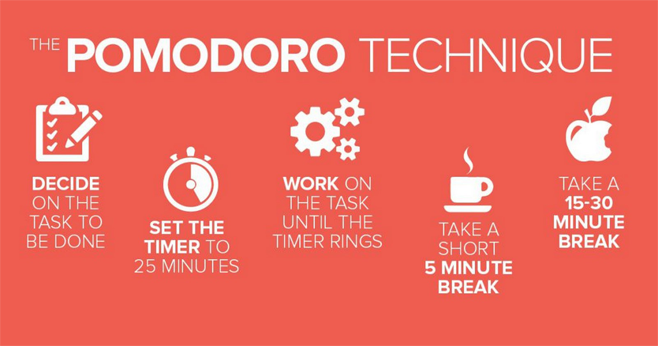


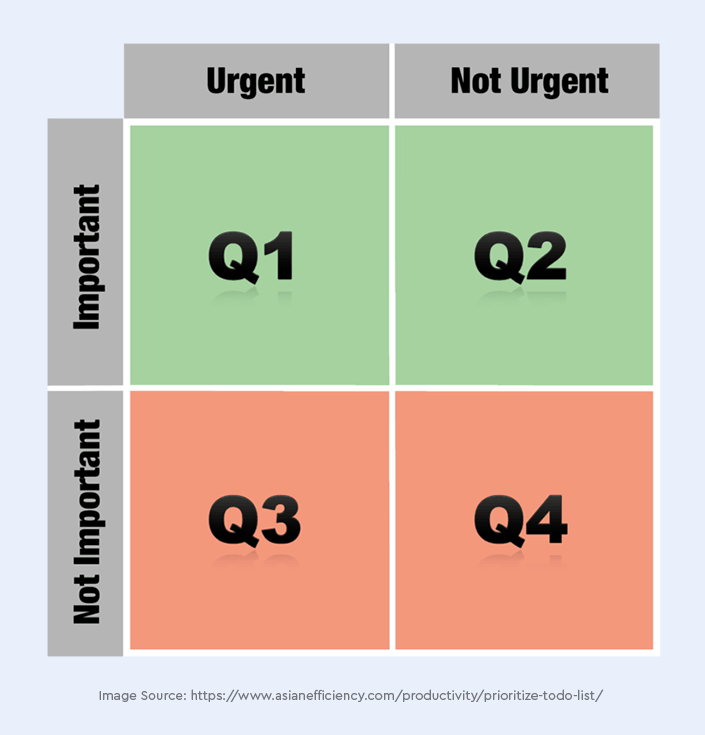


 A Microsoft program that allows for ease of access for sharing notes and allows for customization. It also provides the ability to include voice memos, making it a great choice for meetings on the go.
A Microsoft program that allows for ease of access for sharing notes and allows for customization. It also provides the ability to include voice memos, making it a great choice for meetings on the go. A great “all-in-one” tool, as you can easily link your notes to calendars and share them within your organization. The functionality allows for ease of use for all members and allows easy collaboration by including a comment option.
A great “all-in-one” tool, as you can easily link your notes to calendars and share them within your organization. The functionality allows for ease of use for all members and allows easy collaboration by including a comment option. A great program for note-taking and sharing within an organization, but with fewer options for customization than others.
A great program for note-taking and sharing within an organization, but with fewer options for customization than others. A program that allows for the syncing of multiple aspects of team products, including notes, scheduling and attendance.
A program that allows for the syncing of multiple aspects of team products, including notes, scheduling and attendance.
























